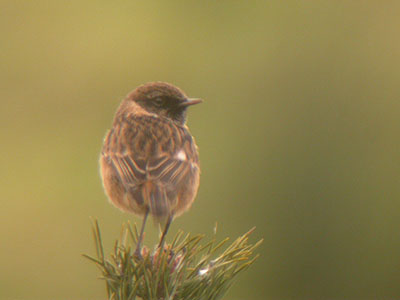

| Digiscoping with the Nikon Coolpix 4500 | ||
 |
After finally taking the
plunge into the world of digital cameras and purchasing a
Nikon Coolpix 4500 in 2002, more photographs of the
area's birds began to appear on the eakringbirds.com web
site. It took a while to get used to the whole concept of digital photography, but the results gradually become more consistant, especially after also purchasing a scope adapter. Adaptors are a vital accessory for the digiscoper, though it is possible to get results by holding the camera directly up to the lens by hand - satisfactory images are frustratingly hard to obtain with any degree of regularity. After the initial outlay for camera, spare battery and larger capacity memory card, within a few months the equipment has begun to pay for itself. There's no more film to buy and no more processing charges. What's perhaps the biggest sell, is that when you return home, your pictures are there on computer within a matter of minutes. There's no more waiting days for low-quality prints, many of which are often spoilt by poor developing techniques. |
|
| ........ | ||
| Results Results were initially rather slow in coming to fruition, but improved once we got used to what is effectively a completely new aspect to the hobby personally. Like after any new purchase, it takes time to become accustomed to the aquisition. The Nikon Coolpix 4500 was totally different to any other camera we had owned before and the assortment of settings took time to get used to as did finding the most suitable settings for digiscoping. This is all part of the learning process and luckily there were no short-staying rarities during this time offering once in a life-time photographic opportunities. Contrary to some recent (not so favourable) write ups in the bird watching press, we find the camera produces some excellent results. We did find that we were making one basic error which took a while to sort out. Following the purchase of the adapter, despite photographing in very bright and favourable conditions, we were constantly battling to get a decent shutter speed to stop image blurring. To combat this I looked at the adapter itself and soon realised that it could be moved nearer to the telescope's eyepiece. In fact, the distance between camera lens and eyepiece could be reduced to within 5mm, rather than the 10mm we were working with. This was because the camera adapter is extremely tight-fitting over the eyepiece and there is perhaps a tendency by the user not to force it into the correct position. Consequently, the available light from the eyepiece is now going directly into the camera and not being lost within the 10mm space between eyepiece and camera lens. This now results in a much faster and workable shutter speed. Photographs taken are now of a more consistant nature and far better than previous efforts. All the time we are working at finding what camera settings are best for particular conditions. Camera settings Listed below are my most frequently used settings. Variations in weather/lighting conditions e.g. very bright sunshine with a predominantly white subject, can see us switch to Manual mode, which allows the choosing of a faster shutter speed. Our most frequently used setting is with the camera on Auto mode and using Macro. Using Macro gives vital extra seconds for camera-shake to stop once the shutter is pressed and the camera is focussed. Cable releases are available for the camera, but at a price. Yes there are instances where the subject is not completely framed (swimming wildfowl) but as you are not wasting valuable film, there's no worry.
One of the most difficult things to get used to is finding the subject in the camera's monitor. Many times, once the subject has been located, it moves or flies off. Certainly photographing many species will be very difficult, but worthwhile when eventually successful. Adobe Software Another thing that took a long time to get used to was the photo-editing software that comes packaged with the camera. For many years we had always used a different photo-editing software and had become familiarised and aquainted with that over time. But like the camera, we worked at using (what is effectively the most powerful photo-editing packages) and now use nothing else. It's probably this same reason which causes some disappointing reviews of the Coolpix 4500 in the birding press - a familiarity and fondness attained over the years with previous cameras. |
|||||||||||||||||||||||||||||||||||||||||||||||||||||||